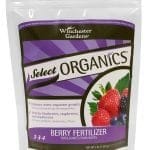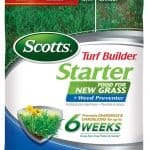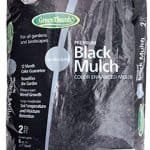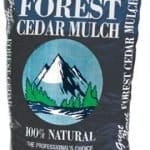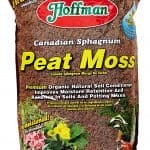The hydrangea is a flowering plant that is native to Japan. The plant is known for its large, showy flowers and its ability to thrive in shady areas. There are over 30 species of hydrangea, and the flowers come in a variety of colors, including pink, blue, purple, and white.
Hydrangeas have a long history in Japanese culture, and the flowers are often used in traditional ceremonies and celebrations. These flowers and plants are also popular in Western cultures, and they are often grown in gardens and used as decoration in homes. The flowers of the hydrangea are traditionally associated with emotions such as gratitude, apology, and congratulations. The plants are also said to symbolize abundance and wealth.
Though Hydrangeas are fantastic flowers, you need to know that mulching plays a crucial part in hydrangeas care. Different mulches provide different benefits to the plants and it is sometimes difficult to find your way through a multitude of types and make of mulches. This is why we put this article together, to help you select the best hydrangea mulch on the market.
We provide 5 of the best mulches for hydrangeas, a buyer’s guide on how to mulch and take care of hydrangeas. We also added a nice FAQ for your perusal.
Benefits of mulching a hydrangea plant – From the expert gardener
Mulching hydrangeas can provide a variety of benefits to the plants. The mulch can help conserve water by reducing evaporation, which is especially important in climates with hot summers and cold winters.
Mulching can also suppress weed growth, and it can help to keep the soil cool in summer and warm throughout the winter. In addition, mulching can improve the soil’s structure and fertility by adding organic matter to the soil.
Overall, mulching hydrangeas can protect them from damage caused by extreme temperatures, strong winds, or heavy rains.
The 5 Best Mulch For Hydrangeas Reviews
Below are five of the best mulch you can use for your Hydrangeas.
- #1. Pine Straw Mulch For Hydrangeas – Best Overall
- #2. Blommers Cocoa Shell Mulch For Hydrangeas – Best Temperature Regulator
- #3. Scotts Organic Bark Mulch For Hydrangeas – Best Against Weed
- #4. 100% Organic Pine Bark Mulch – Best Organic Long Lasting
- #5. FibreDust CoCo Mulch For Hydrangeas – Best Moist
#1. Pine Straw Mulch For Hydrangeas – Best Overall
One of the most important things you can do to get the best blooms from your hydrangeas is to give them the right mulch. So when you are trying to grow hydrangeas, you will definitely want to try Pine Straw Mulch, as we think it is probably the best mulch for hydrangeas on the market.
These pine needles are pretty much unprocessed and go up to 14 inches long. So with the length, this stuff gives you plenty of coverage and helps insulate the soil.
It generally does a great job of regulating the soil temperature during extreme heat or cold, which is one of its talking points. Pine straw just tends to work better than other mulches for temperature control.
Additionally, it also does not move too much with heavy rain or heavy winds, which other mulches tend to blow away too easily. The trade-off is that it can get a little messy to apply. Apply the mulch around the tree leaving 2 inches free from the trunk.
- Good value
- Easy to spread
- High acidic content support hydrangeas growth
- Acidic content prevents other plants to grow
#2. Blommers Cocoa Shell Mulch For Hydrangeas – Best Temperature Regulator
 Blommers Cocoa Shell Mulch For Hydrangeas Mulch is a great way to keep your plants hydrated and healthy.
Blommers Cocoa Shell Mulch For Hydrangeas Mulch is a great way to keep your plants hydrated and healthy.
That’s why our next recommendation if you want the best mulch for hydrangeas is the Blommers Cocoa Shell Mulch. This is pretty much a generic all-purpose organic brown mulch for pretty much anything.
It does a really good job of retaining water and keeping weeds out, which is basically what any organic mulch is going to do. The only exception is that Blommers tends to do this better than others.
Additionally, it is a nice brown color and there’s something to be said about aesthetics. So not only will it protect the soil so your hydrangeas can grow better, but also it just looks nice in the garden. Furthermore, one last talking point is that it does a really good job of keeping fungus, gnats, and other unwanted things away from the soil and roots. This will surely increase hydrangeas yields.
- Keeps weeds out
- Regulate temperature
- A bit expensive
- Can be toxic for dogs
#3. Scotts Organic Bark Mulch For Hydrangeas – Best Against Weed
 Scotts Organic Bark Mulch is an industry standard if you want an all-purpose organic bark mulch for growing plants and flowers. We find it works great on hydrangeas.
Scotts Organic Bark Mulch is an industry standard if you want an all-purpose organic bark mulch for growing plants and flowers. We find it works great on hydrangeas.
The initial appeal of getting Scotts is that it is such a large brand with amazing quality control that you can pretty much guarantee you won’t get a bad batch ever and that this stuff will not be cut.
Also, if it doesn’t quite work out for you (and we know everyone’s situation and environment are different) then you can always use it for something else in the garden. All in all, this general-purpose bark mulch is pretty good at maintaining proper soil temperature, moisture, and nutritional profile as well as keeping weeds, mold, and anything that can attack it out.
- Organic mulch
- Control soil temperature
- Control moisture
- Mulch can be difficult to break down
#4. 100% Organic Pine Bark Mulch – Best Organic Long Lasting
 If you are looking for an organic mulch option that does it all, then look no further than pine bark mulch. This natural mulch is perfect for suppressing weeds, retaining moisture in the soil, and adding nutrients to the earth.
If you are looking for an organic mulch option that does it all, then look no further than pine bark mulch. This natural mulch is perfect for suppressing weeds, retaining moisture in the soil, and adding nutrients to the earth.
It also makes an attractive addition to your landscape by beautifying your garden.
So, if you’re looking for an easy way to add organic matter and improve drainage in your garden, consider using pine bark shavings as mulch.
Basically, pine bark shavings break down slowly over time, releasing nutrients into the soil that help plants grow healthy and strong.
Just lay out about 1.5 to 2 inches of this bark and your garden will flourish with Hydrangeas. Note that this is a 100% natural and organic product, so it will not harm your garden.
- 100% Organic mulch
- Control soil temperature
- Control moisture
- Long-lasting
- Mulch can wash away with rain
#5. FibreDust CoCo Mulch For Growing Hydrangeas – Best Moist
 Lastly, there’s the FibreDust CoCo Mulch, which is a nice small little block that expands out to 2 cubic feet of mulch medium when soaked in water.
Lastly, there’s the FibreDust CoCo Mulch, which is a nice small little block that expands out to 2 cubic feet of mulch medium when soaked in water.
Mulching with FibreDust CoCo is an easy way to protect and feed your hydrangeas.
The mulch is made from coconut husks, which are a natural source of nitrogen. The mulch will help keep the soil moist and will feed the plants as it breaks down.
I want to re-enforce this: this mulch is made of 100% coconut husks and is quite a renewable biodegradable material. Clearly, it doesn’t contain any additives and is pretty eco-friendly.
Many people love using this mulch for hydrangeas because it has amazing durability and will often outlast many of the generic all-purpose mulches, including the ones we mentioned above.
So in other words, this is perfect for a set-it-and-forget-it type project and we recommend it for those who are lazy and don’t want to properly take care of their soil.
- Great product as it is recycling cocoa husks
- Control soil temperature
- Control moisture
- Provide low nutrients when breaking down
Final Verdict on the Best Mulch for Hydrangeas
The best mulch for hydrangeas is light, organic mulch. This type of mulch will help to keep the soil moist and the roots cool. It will also help to improve the fertility of the soil by providing nutrients to the plants.
It is important to keep the hydrangea beds and associated mulch around the base of the plants. One very important point is to not maintain the mulch too close to the stem or trunk. By following these tips, you can help your hydrangeas thrive and bloom beautifully.
If you are looking for the best mulch for hydrangeas, then you should consider one of the following five options.
- Pine straw mulch is an excellent choice if you want a natural look for your garden.
- Blommer’s cocoa shell mulch is ideal if you want to add nutrition to the soil.
- Scotts organic bark mulch is perfect for preventing weeds.
- The 100% organic pine bark mulch is the best option if you are looking for long-lasting mulch.
- FibreDust CoCo mulch is an excellent choice if you want to keep the soil moist.
Note that mulching is a very important part of hydrangea care and should not be taken lightly. The main reason for this is that mulch helps protect the plants from winter (and summer) weather conditions. It, basically, protects the plant throughout the cold winter temperatures (from the cold weather) and maintains an even soil moisture level during hot endless summers.
Remember that Hydrangeas are relatively easy to care for, and they can be propagated by stem cuttings or division of the root system. The plants prefer moist, well-drained soil and full sun to partial shade.
How to mulch hydrangeas in your garden – A Buyer’s Guide
There are four main steps that you need to be aware of for mulching your hydrangeas in an effective manner. These are:
- Select the most appropriate mulching material.
- Applying the appropriate layer of mulch.
- Spreading the mulch to satisfy the hydrangea need.
- Replenish the mulch.
1. Select a mulching material
Chopped leaves, compost (or compost made of leaves or other organic material), pine straw, pine bark, and coco-made mulches are all great for hydrangea trees.
These naturally made mulches serve as nutrients for the soil and reduce the need for watering as they retain soil moisture longer.
2. Get expert advice on applying the appropriate layer of mulch
This is very important to know. If the layer of mulch is too small, then your tree will not really benefit from the mulch. Too much of it will potentially lead to the rotting of the roots. Experts are adamant. You need about 2 inches minimum layer and an absolute maximum 5 inches layer.
The thickness of the layer depends on the material you use. So, for instance, if you use very tiny and fine mulches, then ensure that you apply about 1/2 inch or even a smaller layer of your mulch.
Now, some experts would get to the extent of laying out a maximum of 3 inches in case you are in a very dry and hot climate. Anything thicker may kill your tree as it will prevent air and water to reach the soil. However, even if water reaches the soil, then the water without air may lead to rotten roots.
Now for medium-size mulch, you may also apply a 1-inch layer up to a 4-inch. Experts’ advice is to go for 3 to 4 as this provides better protection to the plant.
Finally, if you have larger/coarser mulches, then just apply 5 inches. That should do.
3. Spreading the mulch to satisfy the hydrangea need
That’s the part you’ll enjoy. As soon as you buy your mulch, get home and start spreading the mulch around the tree trunk and shrubs.
The aim is to cover as much area around the canopy.
Note that it is best to leave about 2 to 3 inches of space with no mulch near the stem/trunk. The aim is to avoid it to rot.
4. Replenish the mulch in springtime
You need to replenish the mulch each year. And the best time is in spring.
What you want to do is to maintain the desired thickness around the tree. Note that if you use finer mulches, you may need to replenish them more frequently. That is why experts prefer pine straw and pine bark as these do not need to be replaced quickly. And these mulches are loved by Hydrangeas too.
Things to do in springtime to get outstanding hydrangeas
There are three main things you can do in springtime so that you get fantastic Hydrangea flowers blooming all over your garden. These are:
- Pruning
- Change your flower colors
- Fertilizing and Mulching
1. When to prune your hydrangeas?
If you want to achieve fuller and healthier shrubs, you should prune your trees in early spring. This is true for both types of hydrangeas, panicle (better known as Hydrangeas Paniculata), and smooth hydrangeas (known as Hydrangeas Arborescens).
You would want to prune panicle types of hydrangeas up to one-half of their annual growth. Note that you need to prune the panicle just above a pair of buds for best results.
Now, smooth types are a little different. You need to prune these above one foot from the ground.
There are other types of hydrangeas such as oakleaf and mophead. These are best not to be pruned.
2. Changing the blooming color
Did you know that you can change the color of your Hydrangea? And do you want to know how to change the color? Well, this is really simple. By just adding aluminum sulfate or lime to the soil, you can alter the flower color of Mophead hydrangeas (H. Macrophylla) and Lacecap hydrangeas (H. Serrata).
Note that a soil acidifier such as aluminum sulfate will darken blue hydrangeas and may also turn purple-pink hydrangeas to more of a purple hue.
On the other hand, lime will turn blue flowers hydrangeas into pink hydrangeas or into pinkish flowers. Apply aluminum sulfate or lime depending on the desired flower color as early as possible after new growth has popped up, and a second application may be applied 1-2 months later. That’s it. You’ve just changed the pink or blue color of your hydrangea flowers.
3. How to Fertilize your acidic-loving plant?
Fertilizing hydrangea shrubs is an easy business that can be done by anyone. Experts agree that it is best to do this twice. Once at the beginning of the season at the pruning time.
The best way to do it is to add the fertilizer around the plant and dig around the soil a couple of inches deep. When done, just add water to the ground. Now add not a too thick layer of mulch on top of the soil (see above sections).
Repeat the above procedure during the summer (beginning to mid-summer will be fine).
FAQ – Frequently Asked Questions about Hydrangeas
Here is some useful information about Hydrangeas plants.
What are the Different Types of Hydrangeas?
There are two main types of hydrangeas:
- Mopheads.
- Lacecap (some write it as Lace cap).
Mophead hydrangeas have large, round flowers that resemble pom-poms. Lacecap hydrangeas have flattened flowers with a ring of small, tubular florets in the center.
1. Mophead hydrangeas
The most common type of hydrangea is the mophead hydrangea, which is native to Japan. Mophead hydrangeas are known for their large, showy flowers and their ability to thrive in shady areas.
There are several varieties of mophead hydrangeas, including the blue hydrangea, the pink hydrangea, and the white hydrangea. The blue hydrangea is the most popular variety, and it is often used in bouquets and floral arrangements.
The pink hydrangea is a popular variety that is often used in wedding bouquets. The white hydrangea is the least common variety, but it is very beautiful and often used in decorative arrangements.
2. Lacecap hydrangeas
Lacecap hydrangeas are native to China and Korea. They are named for their flattened flowers with a ring of small, tubular florets in the center.
Lacecap hydrangeas are not as popular as mophead hydrangeas, but they are still used in bouquets and arrangements. The blue lacecap hydrangea is the most common variety, but the pink lace cap hydrangea is also available. Combining both create a beautiful garden.
What are the Different Hydrangea Colors?
Hydrangeas come in a variety of colors, including pink, blue, purple, and white. The color of the hydrangea flower is determined by the type of soil in which the plant is grown.
Hydrangeas that are grown in acidic soil will have blue flowers, while those grown in alkaline soil will have pink flowers.
As a quick reminder, purple hydrangeas are created by adding aluminum sulfate to the soil. White hydrangeas are the most popular color, and they are often used in bouquets and arrangements.
Pink hydrangeas are also popular, and they are often used in wedding bouquets. Blue hydrangeas are less common, but they are very beautiful and often used in decorative arrangements.
Purple hydrangeas are the least common color, but they are very pretty and often used in bouquets.
If you like Hydrangeas and have acidic soil, then you may also consider planting rhododendrons plant in your garden. Note that one major difference between hydrangeas and rhododendrons is the level of soil acidity each plant prefers. Hydrangeas thrive in soils that are more alkaline, while rhododendrons prefer soil with a lower pH.
What Does Gifting a Hydrangea Flower Mean?
The flowers of the hydrangea are traditionally associated with emotions such as gratitude, apology, and congratulations.
The plants are also said to symbolize abundance and wealth. Hydrangeas are often given as gifts to express gratitude or to apologize for a mistake.
The flowers are also given as a congratulations gift for a job well done.
As we discussed, Hydrangeas are popular plants for both indoor and outdoor use. So, they make excellent cut flowers, and the dried flowers can be used in arrangements or potpourris (to give away as a gift too).
What are the benefits of using pine bark mulch for a hydrangea bush?
There are many benefits to using pine bark mulch in the garden. It helps to retain moisture in the soil, which can be helpful in hot climates or during periods of drought.
Pine bark mulch also helps to suppress weeds and can improve the soil structure. It is also a natural source of nutrients for plants, which can help them to grow healthy and strong.




